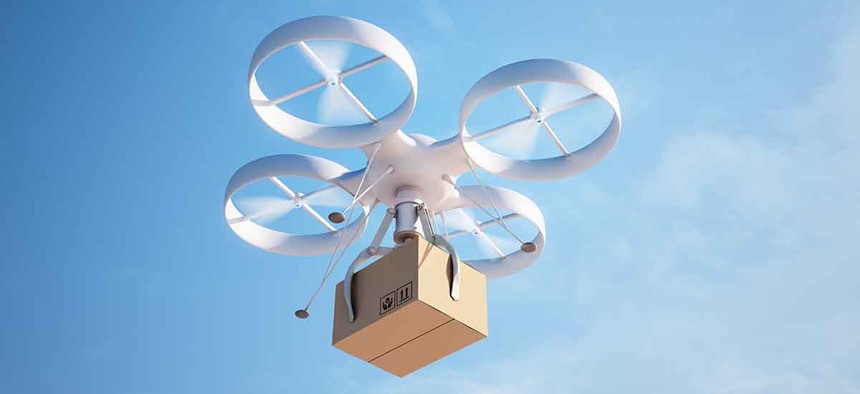Amazon Has a Plan to Defend Drones From Hackers and Bow-and-Arrow-Wielding Troublemakers

Mopic/Shutterstock.com
The company will have to be ready to tackle all sorts of hijack scenarios.
With Amazon’s drones taking to the skies to deliver packages, the company will have to be ready to tackle all sorts of hijack scenarios: hackers, jammers and human attackers.
According to a 2014 patent filing approved Dec. 20, 2016, Amazon’s first line of control to prevent jamming or hacking is a backup communications interface that could be used if the primary system is compromised. And if a hacker gets passed both the primary and backup comms systems and takes control of the drone, a “mesh network” of multiple UAVs (uncrewed autonomous vehicles) could help assess the situation and guide the hacked drone to safety—or at least stop it (and the package it’s carrying) from being stolen.
By relaying data between multiple drones with an array of sensors like directional antennas and optical detectors, Amazon also expects to detect red flags like a UAV veering off its intended path or one cruising at altitudes above or below the assigned flight path.
If that occurs, a secondary UAV can remedy a compromised drone by transmitting alerts to a server. Then, the affected drone would be put into “fail-safe mode”: it’ll stop trying to reach its target destination and hold its location until a rescue drone arrives, ground itself at a safe location, or return to its base.
Either the secondary UAV or a third one can act as a rescue drone, approaching the compromised drone and providing commands “to direct the first UAV to a safe landing, parking, docking and so forth.”
Modern hacking is not all that’s on Amazon’s mind. It also has a fix for old-fashioned attackers that attempt to knock a drone out of the sky by shooting at it. For illustration purposes, the patent shows a “malicious person” using a bow and arrow to shoot down a drone (though it likely means to represent everything from gunshots to missile attacks).
In the event a drone is hit and starts to fall from the sky, it may “deploy a protective device such as an airbag, foam, parachute, bumper and so forth,” which will absorb the impact, according to the patent. It could also begin “autorotation of one or more rotors” to take the blow out of a crash landing.
And after the compromised module has detected and mitigated a threat, it will proceed to send out an alert with location data, so authorities find the drone and, hopefully, the attacker.
As with all patents, there is no guarantee Amazon will introduce any or all of these measures, but at least it’s putting some thought into safety.





